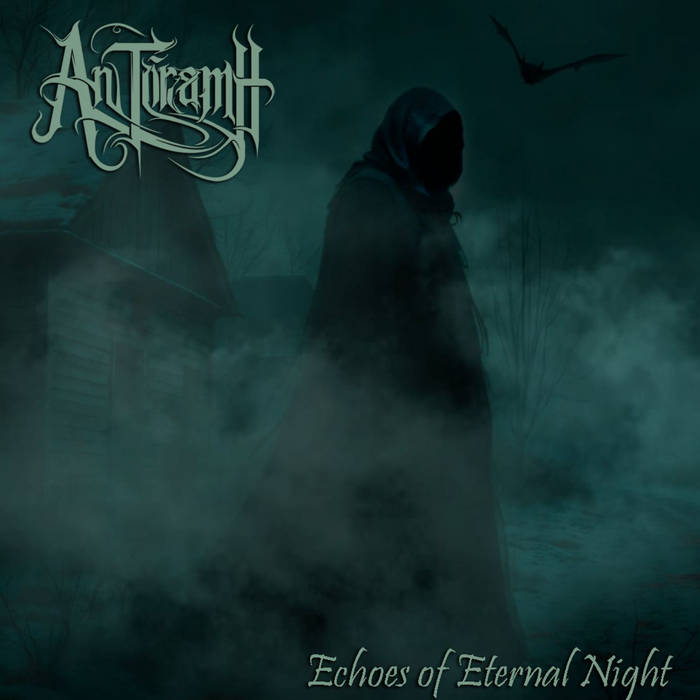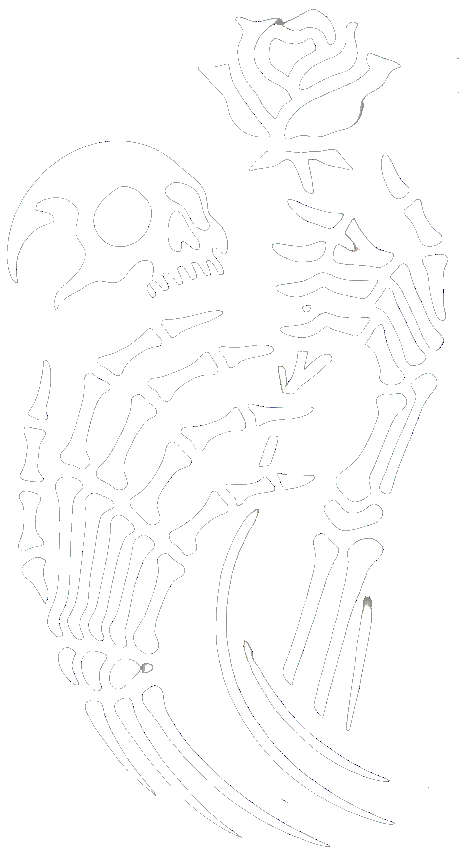An Tóramh is the newest project with John Suffering. For those who don’t know him: John is an incredibly sympathetic institution in the underground metal community of Minneapolis. As the vocalist of various very different bands and as a central figure in the local scene network, he has become a face I at least associate with metal from the city. Additionally, as a person, he is so deeply rooted in the global funeral doom community that you will eventually come across him on social media if you try to connect within the genre yourself. Until now, I didn’t know his partner in crime, Anthony Copertino Jr.
Ambassador of Slowness
Johns best-known project is probably the Celtic-influenced band Chalice of Suffering, but in various facets between death and doom, you can find projects to which he lends his fantastic voice. Forever Falling lies in the early Gothic Doom of the Peaceville Three era, Sweatpants Boner plays Grindcore, Laceratory is Slam Death, and then there’s Utter Failure with Depressive Black Metal. But his heart seems to especially belong to Death Doom / Funeral Doom. In between lie Solemn Echoes, musically and personnel-wise a collaboration between Chalice of Suffering and Helllight, and Chalice of Suffering itself, whose two albums present an elegiac mix of Funeral Doom and Death Doom, accentuated by subtle hints of Celtic folklore. Unlike some musicians who engage in numerous projects within one genre, John is active across a relatively broad spectrum and allows distinct individuality in all his projects. His singing remains mostly guttural with occasional spoken passages. But I would be lying if I claimed to know everything he has been involved in. In any case, his work thrives on the obvious desire to experiment, develop, and expand his range within his preferred music.
Compared to his other Death Doom / Funeral Doom acts, An Tóramh is more reduced, clearer, and unpretentious, evoking memories of bands from the first half of the 2000s. Fans of the roster from NULLL Records can indulge in nostalgia for the golden days of one-man bands and Ambient Funeral Doom. It is somewhat cleaner, less reverberant, droning, and raw, yet the approach remains so classic that a deliberate purism can be recognized.
Between Elegy and Loss
The programmed drums distinguish themselves from memories of bands like Until Death Overtakes Me and Beyond Black Void and simply sound like a drum kit played with a lot of cymbals. The vocals remain firmly in the tradition of the early 2000s, droning and deep — a continuous growl of enormous power and surprising warmth.
Heavy, hard, sometimes droning riffing is repeatedly interrupted by the plaintive, subtle lead guitar, scattering melodic fragments without ever coming fully to the fore. It fluctuates between presence and background, becoming in “Shadows of Despair” itself a trembling element of mourning. The keyboard fanfares, choirs, or strings—never overloaded, never simultaneous—intensify this oppressive feeling of painful loss. The vocals stay deeply growling, consistently powerful yet almost warm, as if the suffering is held in a gesture of grandeur.
The pain becomes musically tangible — an aesthetic that can be linked to Friedrich Nietzsche’s thoughts in “The Birth of Tragedy”. Nietzsche saw tragedy and music as art forms that do not beautify life but shape and elevate it in its chaos, cruelty, and transience. The Dionysian, as he called it—ego-dissolution, intoxication, ecstatic suffering—is not overcome but becomes the bearer of the beautiful. Suffering is not merely depicted; in the context of art, it becomes catharsis, a means to handle the suffering and dark side of life. Represented suffering expands the boundaries of human experience. An Tóramh creates a world where what hurts is not comforted but transformed into dignity through beauty. A Funeral Doom that cultivates no self-pity, no world-weariness, no hatred of the world—a music that does not flee or seek escape but shows, contemplates, and gains greatness precisely through this.
The Dionysian art also wants to convince us of the eternal joy of existence: only we should seek this joy not in appearances but behind appearances. We should recognize that everything that arises must be ready for painful downfall; we are forced to look into the horrors of individual existence—and yet we must not freeze: a metaphysical consolation momentarily rips us out of the machinery of changing forms.
Nietzsche, Friedrich: The Birth of Tragedy out of the Spirit of Music. Leipzig, 1872. §17
Not a Classic, but Strong
The track Desolation breaks away from this tradition with a clearer structure reminiscent of the epic grandeur of Candlemass and Solitude Aeternus. The lead guitar is tragic, the riffing accented, and the vocals sometimes spoken and gurgling, reflecting a desire to depict and convey a kind of emotional weathering.
Otherwise, the music remains true to funeral doom, pairing infernal doom riffs with different tragic elements and deeply mournful growling toward a feeling of cruelty in which the beauty of all the lost elements can still be discovered. If there is one criticism, it is that “Echoes of Eternal Night” does not musically stand out within the genre. It is not a renaissance album with innovative power that will give the genre new impetus and—let’s be honest—nor is it an album with such consistent and great expressive strength that it would become Album of the Year or even a genre classic. Great moments like the title track, “Desolation”, “Shadows of Despair”, and “Sea of Sorrow” are balanced by some generic ones. Consequently, “Echoes of Eternal Night” is a really good and successful album—almost consistently—of purist Funeral Foom. An album that conveys painful beauty. Undoubtedly a band I long to hear more from — a band brimming with the potential for something truly great, and one that serves as a bittersweet reminder of how much time has passed since the last Chalice of Suffering release.

